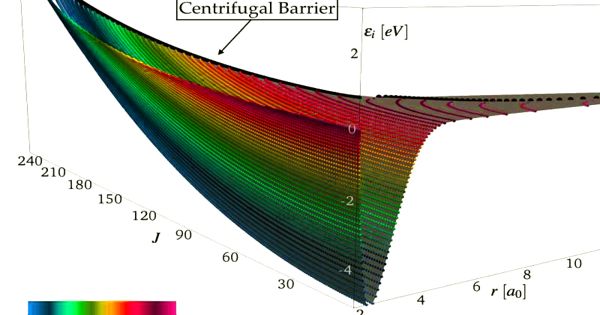Researchers try to improved Modeling of Hypersonic Flow
Hypersonic flying is conventionally referred to as the ability to fly at speeds much greater than sound level and poses an exceptional range of technological challenges. As an example, when a space capsule returns to Earth’s atmosphere, it approaches hypersonic speeds – more than five times the speed of sound – and produces temperatures above 4,000 degrees Fahrenheit on its outer surface. Designing a thermal safety device to keep astronauts and freight safe includes awareness at the molecular level of the dynamic mechanics of the gas circulating around the spacecraft.
Recent research at the University of Illinois Urbana-Champaign added new knowledge about the physical phenomena that occur as atoms vibrate, rotate, and collide in this extreme environment.
“A shock is produced in front of the capsule due to the relative velocity of the flow across the vehicle. When a gas molecule crosses the shock, some of its properties change nearly instantaneously. Others, instead, do not have enough time to react to sudden shifts and do not hit their equilibrium values until they arrive at the surface of the car. The layer between the shock and heat shield is then found in nonequilibrium. There is a lot that we don’t understand yet about the reactions that happen in this type of flow,” said Simone Venturi.
Venturi clarified that the flow cannot be defined in the same manner as the compressible flow in the lower-speed aerodynamics, which looks at the bulk properties of the flow. “The problem is further complicated by the number of phenomena that occur simultaneously—no balancing is just one of them,” Venturi said. “Radiation, for example, is the product of exciting electrical states. Around the same time, the flow reacts with the gasses arising from the ablation of the surface of the capsule.”
The thesis looked at no balance from the viewpoint of acceleration and rotation of molecules in the movement around the vehicle, or rovibrations, a term widely used in the study of hypersonics and quantum physics.
“The input into our simulations comes from the first concepts of Quantum Mechanics. We consider the atoms at a range of relative distances, and we calculate the resulting interaction energies by solving the Schrödinger equation,” Venturi said. “The solution can only be located at a discreet range of points. Machine learning allows one to match and create a continuous surface – what we term a potential energy surface.”
In the past years, researchers started to look at neural networks for generating surface between these points.
“We have added a further level of complexity by extending the neural networks through probabilistic machine learning,” Venturi said. “This not only helps one to define the atomic interactions more clearly, but also quantifies the complexity that affects these objects. We produced a distribution of surfaces instead of just one surface, so the prediction that comes out of these models is not just a single value, but a distribution of values.
Venturi said after they represented the interaction energy between molecules and atoms, they simulated billions of collisions.
While they were not the first to use machine learning to create possible energy surfaces, Venturi said, “we were the first to achieve uncertainty about these quantities. This is a way to verify the precision of machine learning applied to the design of these potentials.”
In the second research project, Venturi said that they now know more about the mechanisms of disassembly in hypersonic fluxes, that is, how molecules sever their bonds and become two separate atoms as a result of intense collisions.
“The extreme temperatures of hypersonic regimes are generating very peculiar physics,” Venturi said. “This makes it difficult to differentiate between the motions and rotations of the molecules. You can’t break them because they’re really tightly related together. We also shown that this phenomenon has significant implications for the processes of dissociation.
“It is fascinating, not only from a chemical point of view, but also from an engineering point of view. The chemical reactions that occur after the gas molecules and atoms collide either inject energy into the flow or remove energy from it,” Venturi said.













